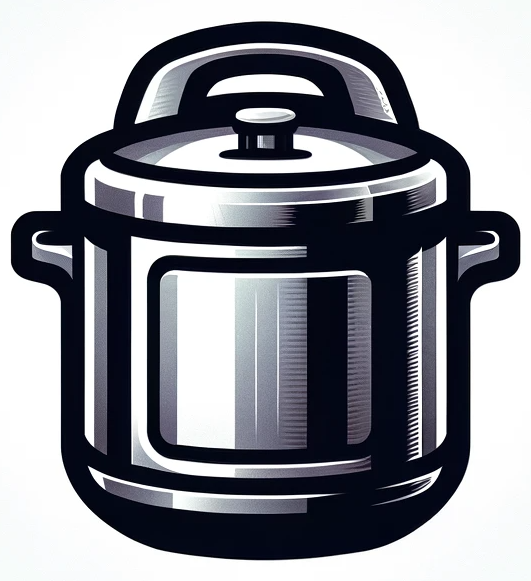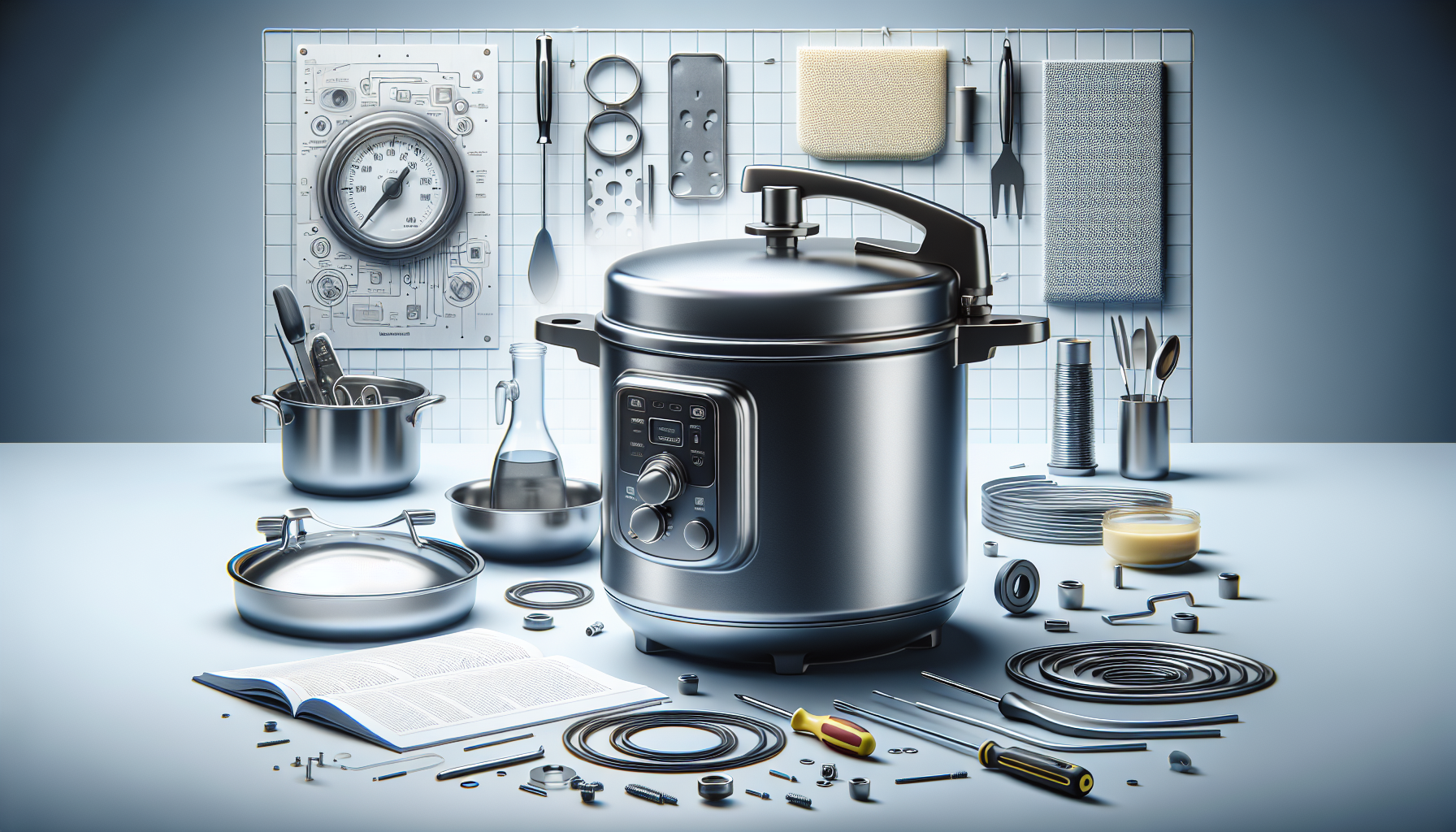Have you ever found yourself frustrated when your pressure cooker doesn’t hold pressure? It can be incredibly disappointing, especially when you’re looking forward to a delicious and efficiently cooked meal. In this article, we will explore some common reasons why your pressure cooker may not be holding pressure, providing you with valuable insights and solutions to get your pressure cooker back up and running in no time. Whether you’re a seasoned pressure cooker enthusiast or new to the world of pressure cooking, this article aims to help you troubleshoot and remedy any pressure-related issues you may encounter.

CHECK OUT PRESSURE COOKERS ON AMAZON
1. Common Causes for Pressure Cooker Not Holding Pressure
1.1. Insufficient Liquid
One common reason why your pressure cooker may not be holding pressure is due to insufficient liquid. Pressure cookers require a certain amount of liquid to build and maintain pressure. If there is not enough liquid in the cooker, the pressure cannot properly build up, resulting in a loss of pressure. Make sure you check the recipe or manufacturer’s instructions for the recommended minimum liquid requirement.
1.2. Broken or Worn-out Sealing Ring
The sealing ring is an essential component of your pressure cooker that helps to create a tight seal and prevent pressure from escaping. Over time, the sealing ring can become worn out or damaged, causing it to lose its effectiveness. Inspect the sealing ring regularly and replace it if you notice any signs of wear and tear, such as cracks or tears.
1.3. Clogged Vent Pipe
The vent pipe is responsible for releasing excess steam from the pressure cooker. If the vent pipe becomes clogged with food debris or other blockages, it can hinder the proper release of steam, leading to a loss of pressure. Check the vent pipe and clean it thoroughly to ensure it is free from any obstructions.
1.4. Damaged or Misaligned Safety Valve
The safety valve is designed to release pressure if it exceeds a certain level, preventing the pressure cooker from reaching dangerous levels. If the safety valve is damaged or misaligned, it may not function properly, resulting in pressure loss. Inspect the safety valve for any signs of damage or misalignment and replace it if necessary.
1.5. Overfilled Pressure Cooker
Overfilling the pressure cooker can also cause it to not hold pressure. When there is too much food or liquid in the cooker, there may not be enough space for the pressure to build up properly. Make sure you follow the recommended fill levels and do not exceed the maximum capacity of your pressure cooker.
1.6. Incorrect Placement of Lid
Another potential cause of pressure loss is the incorrect placement of the lid. The lid should be securely and tightly closed to create a proper seal. If the lid is not properly aligned or closed, it can result in steam leakage and pressure loss. Make sure you double-check the lid placement to ensure it is fitting correctly.
1.7. Defective Pressure Gauge
The pressure gauge is responsible for indicating the pressure inside the cooker. If the pressure gauge is defective or not functioning accurately, it may not provide an accurate reading, leading to pressure loss. Test the pressure gauge using a separate gauge or consult a professional to determine if it needs to be repaired or replaced.
1.8. Faulty Pressure Release Mechanism
The pressure release mechanism, such as the quick-release valve or float valve, is designed to release pressure once the cooking process is complete. If these mechanisms are faulty or not working properly, pressure may not be properly released, resulting in a loss of pressure. Inspect the pressure release mechanism and ensure it is functioning correctly.
1.9. Faulty Gasket
Similar to the sealing ring, the gasket is another component that helps to create a tight seal in the pressure cooker. If the gasket is faulty or damaged, it can lead to pressure loss. Regularly inspect the gasket for any wear and tear and replace it if necessary.
1.10. Improper Heat Source
Using an incompatible heat source for your pressure cooker can also affect its ability to hold pressure. It is important to use the recommended heat source specified by the manufacturer. Using a heat source that is too high or too low can result in imbalances in heat distribution, causing pressure loss.
2. How to Troubleshoot and Fix Pressure Cooker Not Holding Pressure
2.1. Check the Liquid Level
If your pressure cooker is not holding pressure, the first step is to check the liquid level. Ensure that you have enough liquid in the cooker based on the recipe or manufacturer’s instructions. Add more liquid if necessary and make sure you do not exceed the maximum fill level.
2.2. Inspect the Sealing Ring
Inspect the sealing ring for any signs of damage or wear. If you notice any cracks, tears, or deformation, it is recommended to replace the sealing ring. Consult the pressure cooker’s manual or contact the manufacturer for the appropriate replacement part.
2.3. Clear the Vent Pipe
If the pressure cooker’s vent pipe is clogged, it can obstruct the release of steam and cause pressure loss. To clear the vent pipe, detach it from the pressure cooker and clean it thoroughly using a brush or pipe cleaner. Make sure there are no obstructions blocking the steam flow.
2.4. Examine the Safety Valve
Carefully inspect the safety valve for any signs of damage or misalignment. If the safety valve is not functioning properly, it may need to be repaired or replaced. Consult the pressure cooker’s manual or seek professional assistance to ensure correct repair or replacement.
2.5. Adjust the Pressure Cooker Fill Level
If you have overfilled the pressure cooker, remove some of the contents to adjust the fill level. Follow the recommended fill level indicated by the manufacturer. Properly adjusting the fill level will allow the pressure cooker to build and hold pressure effectively.
2.6. Ensure Proper Lid Placement
Double-check the lid placement to ensure it is properly aligned and securely closed. If the lid is not fitting correctly, adjust its position or replace any damaged components. A tight and secure lid is crucial for maintaining pressure in the cooker.
2.7. Test the Pressure Gauge
Verify the accuracy of the pressure gauge by comparing its reading with that of a separate gauge, if available. If the pressure gauge is defective or not functioning accurately, it may need to be repaired or replaced. Consult the pressure cooker’s manual or contact the manufacturer for guidance.
2.8. Repair or Replace the Pressure Release Mechanism
If the pressure release mechanism, such as the quick-release valve or float valve, is not functioning properly, it may need to be repaired or replaced. Consult the pressure cooker’s manual or seek professional assistance to ensure correct repair or replacement.
2.9. Replace the Faulty Gasket
If the gasket is found to be faulty or damaged, it is recommended to replace it. Follow the manufacturer’s instructions for gasket replacement or consult a professional for assistance. An intact and properly functioning gasket is essential for maintaining pressure in the cooker.
2.10. Verify the Compatibility of Heat Source
Double-check that you are using the recommended heat source for your pressure cooker. Using an incompatible heat source can lead to imbalances in heat distribution and result in pressure loss. Verify the heat source specifications in the pressure cooker’s manual or contact the manufacturer for guidance.
3. Precautions to Maintain Pressure Cooker Pressure
3.1. Clean and Lubricate Regularly
To maintain pressure cooker pressure, it is important to clean and lubricate the various components regularly. Follow the manufacturer’s instructions for cleaning and lubrication. This helps prevent any buildup or sticking that can affect the pressure cooker’s performance.
3.2. Handle with Care
Handle your pressure cooker with care to avoid any damage that can lead to pressure loss. Avoid dropping or mishandling the cooker, especially the lid, as it can affect the seal and overall functionality. Treat your pressure cooker gently to maintain its performance.
3.3. Follow the Manufacturer’s Instructions
Always follow the manufacturer’s instructions when using and maintaining your pressure cooker. Each pressure cooker may have specific guidelines that must be followed to ensure safety and optimal performance. Read the manual thoroughly and adhere to the recommended practices.
3.4. Conduct Routine Inspections
Perform regular inspections of your pressure cooker to catch any potential issues early on. Check for signs of wear and tear, such as cracks, leaks, or loose parts. Address any problems promptly to prevent pressure loss and maintain the cooker’s efficiency.
3.5. Store Properly
Proper storage of your pressure cooker is important to maintain its pressure-holding capabilities. Ensure the cooker is clean and dry before storing it. Store the pressure cooker with the lid removed to prevent any moisture buildup. Follow the manufacturer’s instructions for specific storage recommendations.
CHECK OUT PRESSURE COOKERS ON AMAZON
4. How to Prevent Pressure Cooker Pressure Loss
4.1. Proper Liquid Measurement
To prevent pressure cooker pressure loss, ensure you measure the liquid accurately according to the recipe or manufacturer’s instructions. Using the recommended liquid measurement ensures the cooker can build and maintain pressure effectively.
4.2. Regularly Replace Sealing Ring
Regularly inspect the sealing ring for wear and tear, and replace it as necessary. A worn-out sealing ring can compromise the pressure cooker’s ability to hold pressure. Follow the manufacturer’s guidelines for proper sealing ring replacement.
4.3. Keep Vent Pipe Clear
Regularly check the vent pipe and ensure it is free from any blockages. Cleaning the vent pipe at regular intervals prevents steam buildup and ensures proper pressure release. Clear any debris or obstructions to maintain optimal pressure cooker performance.
4.4. Check Safety Valve Regularly
Inspect the safety valve periodically to ensure it is in proper working condition. The safety valve plays a crucial role in preventing excessive pressure buildup. If you notice any damage or misalignment, have it repaired or replaced by a professional.
4.5. Avoid Overfilling
Do not overfill your pressure cooker beyond the recommended fill level. Overfilling leaves inadequate space for pressure to build, resulting in pressure loss. Follow the manufacturer’s guidelines for proper fill levels to maintain optimal pressure.
4.6. Ensure Proper Lid Placement
Always ensure the lid is properly aligned and securely closed. Improper lid placement can lead to steam leakage and pressure loss. Make it a habit to check the lid placement before turning on the pressure cooker.
4.7. Periodically Calibrate Pressure Gauge
Calibrate the pressure gauge periodically to ensure accurate pressure readings. A calibrated pressure gauge helps you monitor and maintain the right pressure levels inside the cooker. Follow the manufacturer’s instructions for pressure gauge calibration.
4.8. Follow Maintenance and Repair Guidelines
Adhere to the maintenance and repair guidelines provided by the manufacturer. Regularly clean, inspect, and lubricate the pressure cooker as recommended. Address any maintenance or repair needs promptly to preserve the cooker’s pressure holding capabilities.
4.9. Use Compatible Heat Sources
Use the heat sources recommended by the manufacturer to avoid pressure loss. Different pressure cookers may have specific heat source compatibility requirements. Using an incompatible heat source can affect pressure buildup and overall performance.
4.10. Inspect and Replace Faulty Gaskets
Regularly inspect the gaskets for any signs of damage or wear. If you notice any issues, such as cracks or tears, replace the gasket promptly. A faulty gasket can compromise the pressure cooker’s ability to hold pressure effectively.
5. Conclusion
Pressure cooker not holding pressure can be frustrating, but with proper troubleshooting and maintenance, you can address the issue and enjoy the benefits of efficient pressure cooking. By understanding and addressing the common causes, following the troubleshooting steps, and implementing the preventive measures outlined in this article, you can ensure that your pressure cooker consistently holds pressure and provides successful cooking outcomes. Remember to always refer to the manufacturer’s instructions and seek professional assistance if needed. Happy pressure cooking!

